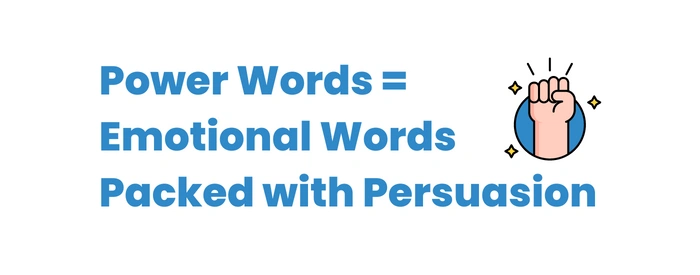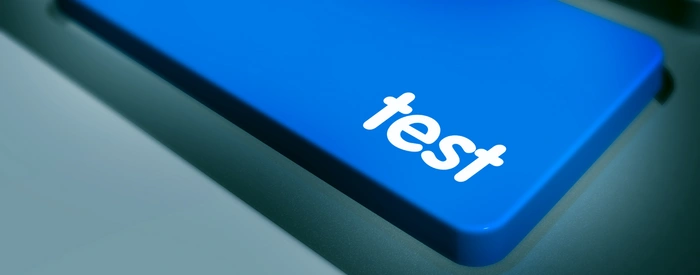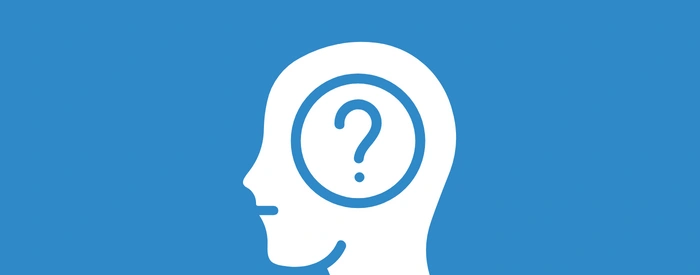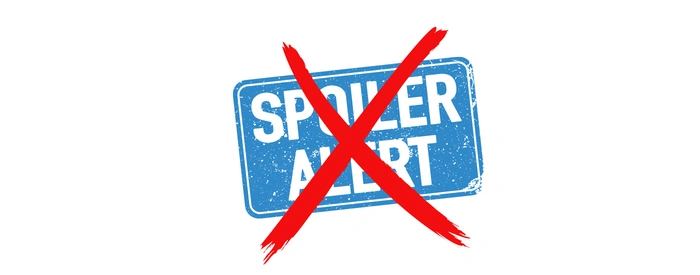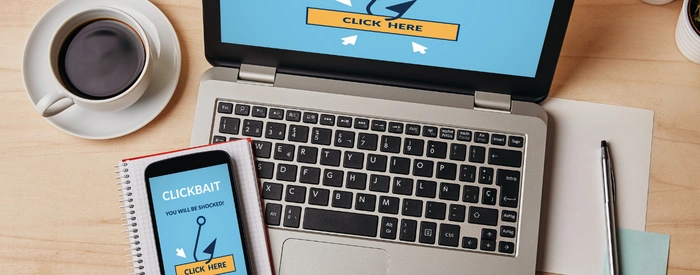- Blog Home
- Scripted Writers
- 13 Rules To Follow When Writing Headlines
13 Rules to Follow When Writing Headlines
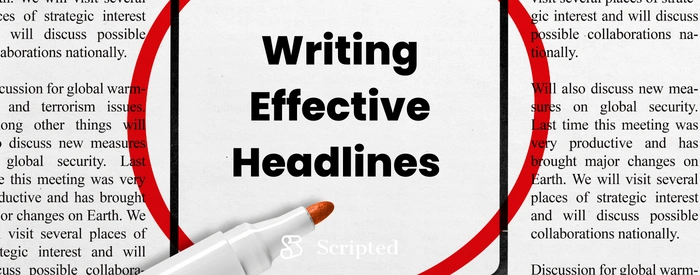
We live in a world of short attention spans and endless scrolling. Because of this, it's essential to make sure that your headlines stand out and engage. Articles with dull headlines will never get the attention they deserve, no matter how good the content within the article is. Writing good headlines means understanding your audience, tuning in to their needs and making sure that your headlines meet those needs in a succinct way. Thoughtful headlines which accurately describe the article's content also help with search engine optimization. They ensure that more people see your article, increasing website visits and engagement.
Writing effective headlines is both an art form and a science, and there is no one formula that works all the time. However, there are core principles you can use as you craft them. Here are some rules to keep in mind when writing effective headlines:
Use Numbers
Numbers are like "brain candy" for the human mind. People are drawn to them because numbers provide a logical organizational structure that helps us make sense of something seemingly random. Numbers help create order out of chaos and allow us to connect ideas in ways that may appear impossible at first glance. Not only that, but when presented with a number, our brain almost instantaneously creates an abstract mental image of what that number represents and how it is connected to other information.
By breaking down content into numbered entries, readers can quickly scan each entry's opening line and determine the relevant information. This can save time in the long run, as readers can glance over that don't pertain to them or offer value. An organized blog post also makes it easier for readers with limited attention spans and short timelines, such as commuters multitasking with other activities, to gain insightful information from your work.
Include Statistics
While a common use of headlines featuring numbers is a list post or listicle, numbers in headlines can also be a powerful way to indicate interesting statistics. LinkedIn research determined that headlines with stats garnered higher click-through rates than those without. It makes sense because presenting numerical evidence allows readers to draw conclusions on their own. It makes it easier for individuals to trust an author and believe they have done their research.
Use Quotes Sparingly
Giving your article a headline that includes a quote can be tricky. Headlines contain only the briefest snippets of information, so quotes often take up too much space and don't usually tell readers enough about what they need to know: what your article is about. However, there may be circumstances when a carefully chosen quote is effective. If you have a particularly pithy quote that sums up your content, use it. For example, during the Watergate scandal, "Nixon: I am not a crook!" worked well.
Use Power Words
Whether you want your headline to make people feel scared, encouraged, aroused, angry, greedy, or curious, using power words can be more effective than dull words. Examples of power words that spark fear include "agony," "menacing," and "backlash." Power words are emotion-filled and create a strong reaction in readers, making them more likely to click on your content.
Choose Point of View Carefully
When choosing the point of view for your writing, it can be helpful to think about who your target audience is and what they will respond to best. In many cases, readers are looking to see what they can gain from a piece of writing rather than focusing on only the accomplishments or experiences of the writer. For this reason, it's wise only to use first person if you are specifically targeting an audience that enjoys this approach.
On the other hand, using second person is a great way to create a personal connection with readers. A simple example would be the difference between "Ways You Can Save Rent Money" and "Five Ways To Save Rent Money." The first headline addresses the reader directly and creates a greater sense of relevance.
Consider the Length of Your Headline
Headlines have become shorter in recent times. However, that doesn't mean a longer headline won't work. Consider what information you need to get across and how you can best do it in a limited space. If you're writing about a complicated topic, use a longer headline to ensure readers understand what your article is about. However, if your content is more straightforward, keep your headline short and snappy. In 2021, after analyzing 100 million headlines across Facebook and Twitter, Buzzsumo found that the ideal headline length for those platforms is 11 words and 65 characters.
Do Your Keyword Research
Before search engines, you didn't have many options if you wanted to know precisely what words a large group of people would use when thinking about a specific topic. It would take too long to ask enough people what words they used. However, you do want to use the words that people naturally use because those are the words they will type into search engines to find more information about the topic. To write great headlines, you should also target niche phrases. They may get less traffic, but the readers are usually highly interested in the subject. To get started, use keyword research tools like Google Trends and SEMRush to find out what terms people are using when searching for information about your topic. Neil Patel's AnswerThePublic is another excellent tool to help you develop good headlines.
Test and Iterate
To get the most out of your headlines, it's essential to test them and see which ones perform best. Some content management systems allow you to quickly A/B test headlines, or you can use split testing tools such as Google Optimize. This way, you can try different headlines and measure which ones have the highest click-through rate. After testing several variations, use the learnings to improve your headline writing skills.
Be Creative
A creative headline can be a great way to stand out from the crowd, especially if you're writing about a topic that's already been covered extensively. If you can think of a unique angle, use it to your advantage and craft an attention-grabbing headline. You may want to experiment with puns or alliteration or create a listicle-style headline that starts with "X Ways To…." For examples of creative headlines, browse Medium or BuzzFeed.
Spark Curiosity
Another way to make your headlines stand out is to focus on sparking curiosity. People are naturally drawn to stories and questions, so consider using this in your headline. For example, instead of "Top 10 Reasons to Save Money", write "What the Super-Rich Know About Saving Money That You Don't." This headline sparks curiosity and gives readers an incentive to click through and find out what they could be missing out on.
No Spoilers
You want to captivate your reader with just one line yet still provide enough detail to give readers an idea of the content they are about to delve into. However, don't give too much away, as that could diminish their interest in finishing your piece. The key is finding the perfect balance where your header can draw readers in without giving away any spoilers. With a well-crafted hook sentence, you'll be able to lead the audience to your story while keeping the suspense alive until you reach your conclusion.
Don't Use Clickbait
It's important to remember that there is a difference between writing an eye-catching headline and using clickbait. Clickbait headlines are often exaggerated or misleading, while a good headline conveys what the article is about but makes it interesting. Avoid making false promises or overselling your content to get clicks. Instead, focus on creating headlines that accurately reflect the content of your article and entice readers to click.
Be Educational
A popular headline structure is "how to," but how does one make an interesting headline from this? Fortunately, numerous ways of sprucing up the technical "how to" concept exist. For example, you could use the phrase "X Best Methods for..." or "How To Master…". Including keywords like "101" or "Complete/Beginners Guide" also helps. This is because these phrases instantly reassure readers that the article will be tailored to a beginner's level of understanding and contain every essential point they need to master the topic at hand.
In Conclusion
Every element of copy has just one purpose, getting the reader to the following sentence. Your headline is no different; it should draw the reader in and make them want to keep reading. Interesting subheadings throughout can reinforce this effect, leading the reader along with the flow until they reach your call to action.
Accelerate Your Growth With Content Marketing
With Scripted, you have access to trusted experts who understand how to help you design and implement an effective content strategy quickly and effectively. We provide the guidance needed to implement your content marketing strategy, helping you achieve long-term success. Let Scripted handle the heavy lifting. Start your free trial today.



